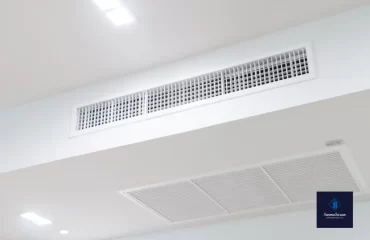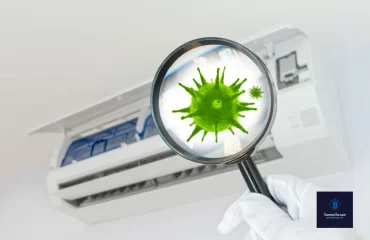The work of chillers is based on the phase change of a solution. Therefore, in the process of evaporation of the refrigerant solution and water, there is a possibility of deposition of other materials on the site. The water circulating inside the chiller is not without impurities. Especially in the condenser section, as the refrigerant evaporates, other materials such as minerals precipitate. This sediment disrupts the performance of the chiller, especially its condenser. In addition, sediment causes the heat transfer rate to decrease and the compressor discharge pressure to increase. Ultimately, these issues reduce the efficiency of the chiller. The intensity of sedimentation depends on factors such as the quality of water used in the chiller, the distillation temperature and the cleaning distance of the pipes. But deposition in the chiller is natural and inevitable. At the same time it can be destroyed by acid. For this reason, acid washing is used to remove all these deposits inside the chiller.
Chiller acid washing is done with discolored acid. Of course, hydrochloric acid and sulfamic acid are also used for this purpose. In acid chiller washing, it is important to observe the concentration of each of these solutions, their pumpability at the time of purchase, and safety tips at the time of use. Especially when working with acid that reacts with sediments, the chiller connections must be strong to protect against vibrations of the compound.

How is acid chiller washing done?
The method of acid chiller washing is that first both sides of the condenser are opened and the sediments are removed manually and physically by a suitable pipe. Finally, acid washing is done for sediments that still remain there. Then the main acid wash begins. To achieve a solution with a certain percentage – for example acid with 5% – it is this acid that is added to water. The chiller inlet and outlet nozzles are then closed to allow only the acid solution to circulate in the water. The inlet is connected to a 5% acid tank or barrel, and this mixture of water and acid is pumped into the chiller.
To reset the purity of the acid, part of the water can be drained or added to the amount of acid. After finishing the work, the tanks are washed with empty water and the pH of the water is checked to check the correct amount of work. If the pH has reached the desired value, the washing and acid washing work is done successfully.
After controlling the quality of the chiller acid wash, it is necessary that the chiller environment is in contact with an alkaline substance to reach a neutral state. Finally, after rinsing with alkali, it is necessary to rinse the chiller again with water. Alkaline washing time is shorter than acid washing time.

Finally, chiller acid washing should be done regularly and regularly. It has been said before that one of the factors influencing the intensity of chiller deposition is the time interval between cleaning the pipes. In fact, cleaning the pipes means the same as acid chiller washing. In general, chiller acid washing should be done regularly every year, but in some cases, depending on the weather and the volume of cooling, it may be as high as once every six months.
In general, two designated times for chiller acid washing are specified. One before initial start-up and the other; When service. Washing used pipes that contain sediment is known as Remedial Cleaning and is in the second category. In this mode, the chiller is working and constantly on.
But acid use before use is such that there is no oil, sediment, metal chips and rust in the chiller pipes to affect the performance of the chiller. These sediments and oils and the like can be related to the factory production time and to the previous use of the chiller. Because chillers that have been turned off for a while and are intended to be serviced and used again must also be acid-washed.

 English
English  فارسی
فارسی 



